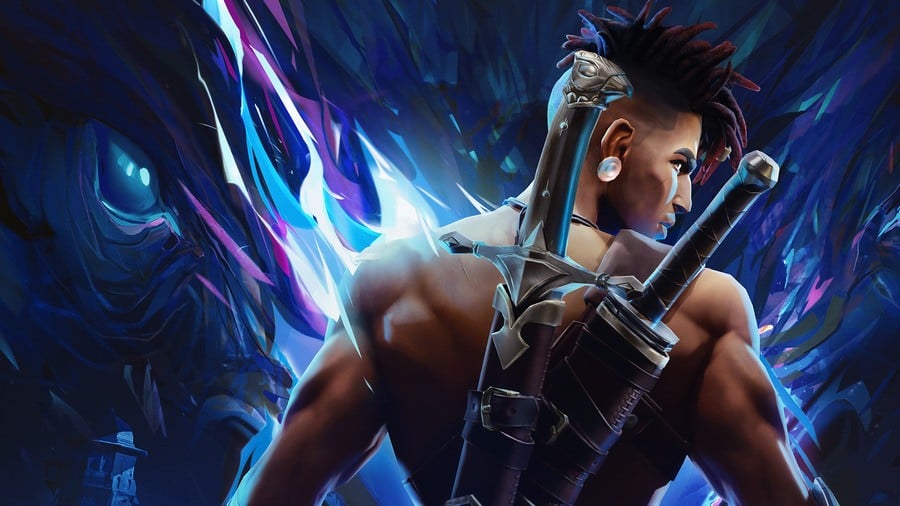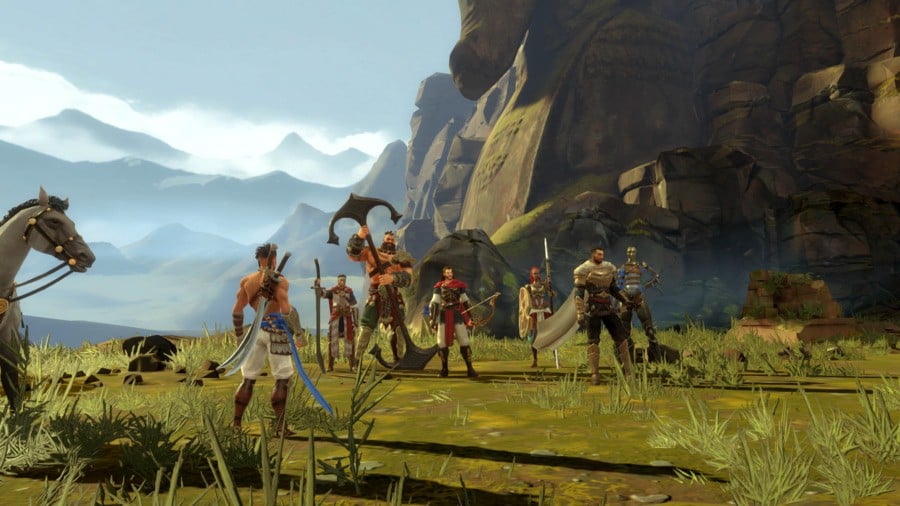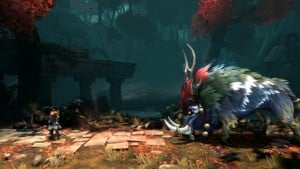Products You May Like

The Prince of Persia series is held near and dear to the hearts of many, whether you fell in love with the original platformers and their revolutionary rotoscope animation, The Sands of Time for its rewind mechanic and magical atmosphere, or maybe even the reboot from 2008 — which we’re sad never received a Nintendo release, or a true ending for that matter.
The franchise is back soon with quite a few fun twists in the upcoming Prince of Persia, the Lost Crown, which we’ve recently been given a pretty in-depth look at. While we were out visiting the Ubisoft office, we also had the chance to pick the brain of Joseph-Antoine Clavet, the cinematic director on this new Prince of Persia.
We got onto talking about all sorts of things, from the team’s anime inspirations to what it means to be crafting this new Prince for a modern generation, and what it truly means to have strength. We hope you enjoy.
Note. This article is a text adaptation of our video interview — if you’d prefer to watch the video, you’ll find it at the bottom of the page.
Nintendo Life: Real quick before we start, like with Prince of Persia: Warrior Within, we wanted to ask if Godsmack is going to be making an appearance in this new game?
Joseph-Antoine Clavet: Godsmack is not gonna have any tracks in this game. [laughs]
What does your day-to-day look like as a Cinematic Director?
To go through the scripts with the team, to see if we’re telling the right story at the right story beats. From having the scripts, we’re going to break down into storyboards. When we like the storyboards created by the team, we’re going to go ahead and move to the animatics. We’re going to animate those storyboards to see if the flow is right, to have the right editing.
With this game we decided to go with a hybrid format between using some mocap and some keyframe [animation]. We wanted to have the weight and natural animation that mocap can provide, but mocap has this limitation when you want to have something snappy that feels like Shonen anime and have this really huge sense of energy and power. So we did it in hybrid.
I was also in charge of preparing the mocap shooting, directing the actors, and then bringing that back to my team and start assembling it. We use mainly the mocap for everything that might be a bit harder. Sometimes we use keyframe for things that need some weight, like some runs, some walks, some natural moments where characters are talking and you want a subtlety of human motion. Always knowing that in this mocap, we’ll take some of the key poses and then exaggerate them or put a focus on them. Everything that was more action-oriented, we will shoot in mocap in terms of having a blocking, understanding the action. But then most of it was reworked in keyframe to get the snappiness and the sense of elasticity or the illusion of force you might see in Shonen anime in these over-the-top grand moments.

How early into the production did you get pulled in? Were you there from the beginning?
In terms of cinematics, we always arrive a bit later because the game has to have this its first breath before we actually start putting cinematics into them. The game started development in 2020 and I arrived mid-2021 when we started having enough material to start building cinematics from.
It was a process of collaboration, iteration, and discussion to find what was the right tone for the story we wanted to tell, because cinematics, in my opinion, need to serve a purpose that is driving the story, being a reward for the player, a foreshadowing [of] a big event or a big moment. And sometimes it just can be something that closes a certain act or a certain moment of the story. So I arrived in mid-2021 and since then I’ve been on the project up to this very moment.
Is there a favorite anime that you watched growing up or even in recent years that’s really kind of helped create this vision for this game?
[There were] many different types of references because depending on what you’re doing, you want to find the right references. I grew up watching Dragon Ball every six o’clock, every morning there was Dragon Ball. I was also a big fan of Sword of the Stranger, which was an influence that we put in different places and some of the cinematics. Ninja Scroll also for me, not in the tone because this is a tone that is a bit heavier. [And] Berserk, for me, is a masterpiece in terms of manga. I love having the full series — it’s not the tone we’re looking for, but [a] certain message that there is to this story. There were so many anime[s]. Some of the team, [their inspirations] were more Naruto, some of the team it was more Demon Slayer.
It was more the sense of the style, how everything is larger than life in anime, how you feel overpowered and this elasticity in the animation, the musicality of animation. When I say ‘musicality’ that was always something that Mounir [Radi], the Game Director, would always get back to. Sometimes he could explain something he wanted with sounds, and it worked! Like, right away it clicks – BA DA BA DUM BOOOO BAM! And all of a sudden you’re like, “Yeah, I know exactly what you mean. We’re going to go in this direction.”

France is a huge consumer of manga and anime. Huge. This is really part of their culture in terms of animation. A big part of the team grew up on anime and this is something that is interesting from French culture because even I — I come from Montreal — and every anime that we [would] see when we were kids were dubbed in France and it was not yet really in the States or in Anglophone countries. It was there but more niche.
It’s been about 14 years since a traditional Prince of Persia was released. How does it feel to be part of the crew that’s steering the ship for a new generation? A new generation of people are going to come around and this is going to be their Prince of Persia.
It’s a pretty big deal. It’s an honour. I grew up on those games, I grew up from the Jordan Mechner games. From where it came from in this platformer format, going to the 3D format, even the 3D ones have different tones, different ways of telling their story. It’s an honour when you grow up on a certain type of content and then when you become an adult and you’re able to craft this content, it feels like you’re part of a myth that just keeps growing and growing.
During our preview session with The Lost Crown, another character poses a question to Sargon about what’s at the end of his blade. Can you talk more about that?
Joseph: Ahh yes, “The warrior’s journey is neverending, and at the end of his journey, the warrior wonders, ‘What is at the end of my blade?’”

It’s a question that will have a different answer depending on the people. Like your journey, like my journey, like everybody’s journey. Something that was really important for Mounir and Jacques [Exertier], who is the narrative director, was the Warrior’s Journey. The journey of Miyamoto Musashi, for example. We wanted something that had these really martial questions that are more philosophical and don’t have a precise answer, but that drive you to wonder what type of warrior you will be.
When we discuss it with the team, “What is at the end of your blade?” [For] some people, “It will be my enemies”, some people might be, “The blood of my enemy”, some might be, “My own reflection.” But some people might tell you, “Maybe this is me,” because the end of the Blade might be the handle.
So it’s a question that doesn’t have one answer, just like the Warrior’s Journey, like everybody’s journey and this is the journey we wanted to give to Sargon. He starts out really proud of his skills, but what does it mean to be strong? Does it mean only muscle [or] swords? Or does it mean to learn kindness? Does it mean to learn poetry? Does it mean to be bigger than only a man with swords? And so this sentence is just the opening of Sargon’s journey. What will be his coming-of-age story? Will he [be] true to his journey and will he be the same man [as] at the beginning? Will he be only a gifted swordsman or more than that?
It’s a non-answer question that has a meaning different for everyone. Another question was, what does it mean to be strong? You could be the strongest in a room with your muscle, but if this is not the situation, you cannot go through your life punching everything, you know? And this is what we wanted for Sargon. We wanted something that was more than only a guy using swords. What will he become through the journey?
This interview has been lightly edited for clarity.
The most royal thanks to Joseph-Antoine Clavet for taking the time to share his passion for this medium with us. Prince of Persia: The Lost Crown is scheduled to launch on Switch and other platforms on 18th January 2024. Travel costs for this interview were covered by Ubisoft.
